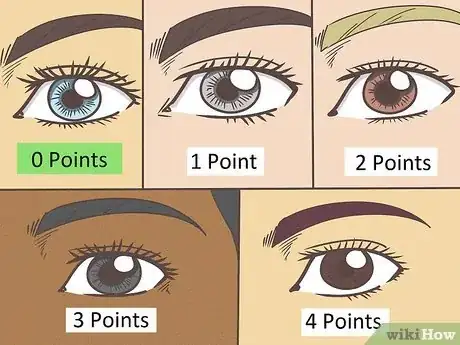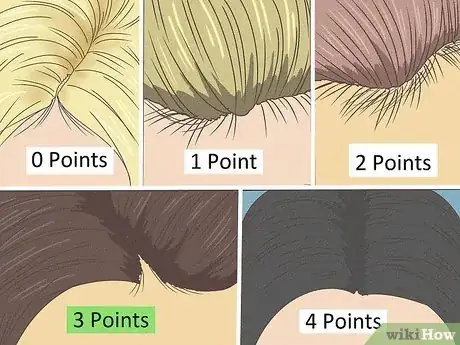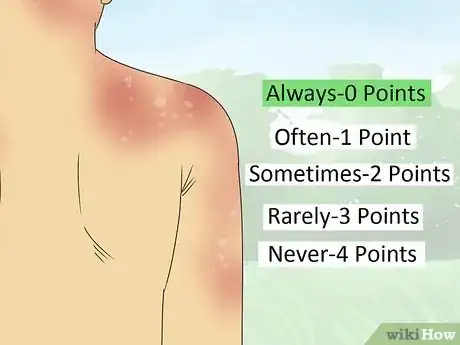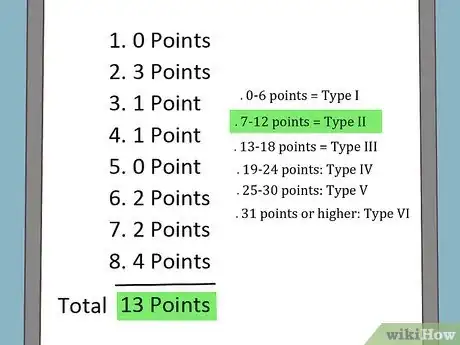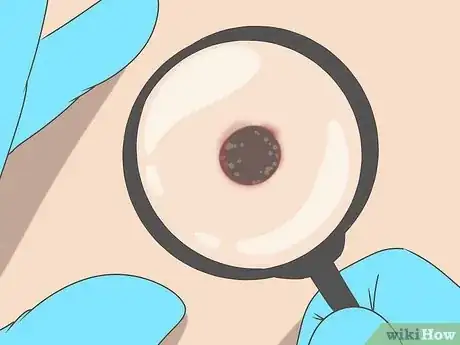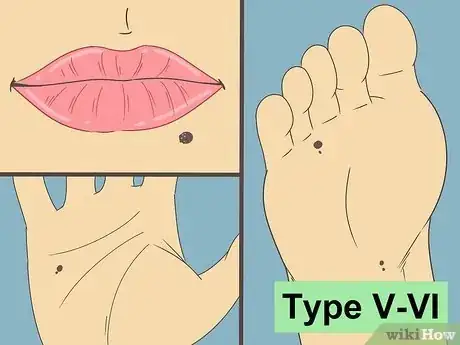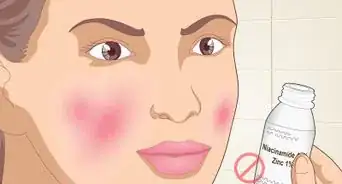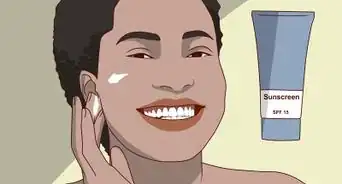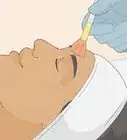This article was medically reviewed by Luba Lee, FNP-BC, MS. Luba Lee, FNP-BC is a Board-Certified Family Nurse Practitioner (FNP) and educator in Tennessee with over a decade of clinical experience. Luba has certifications in Pediatric Advanced Life Support (PALS), Emergency Medicine, Advanced Cardiac Life Support (ACLS), Team Building, and Critical Care Nursing. She received her Master of Science in Nursing (MSN) from the University of Tennessee in 2006.
This article has been viewed 29,140 times.
Everyone wants to have beautiful, healthy skin – and protecting your skin can lower your risk for skin cancer and other health problems. Not all skin requires the same type of protection, however. Developed by a dermatologist at Harvard University in 1975, the Fitzpatrick Skin Type system can help you think about your risk for sunburns and skin cancer, and take the right precautions.[1] Figure out your Fitzpatrick Skin Type by taking a simple quiz at home, or see a healthcare professional for guidance.
Steps
Taking the Standard Quiz
-
1Look at your eyes in the mirror. Get a piece of paper and a pen or pencil, and write down your points as you go through the following questions. First, gaze into a mirror and look at the color of your eyes. Assign yourself the correct number of points based on your eye color using this point system:[2]
- Light blue, light green, or light grey = 0 points
- Blue, grey, or green = 1 point
- Hazel or light brown = 2 points
- Dark brown = 3 points
- Brownish black = 4 points
-
2Check your hair’s roots. Consider the color that your hair is naturally, without any coloring or dye. If your hair is dyed, look at your roots – the hair that has grown out from your scalp since your last coloring. Assign yourself points based on the following for your natural hair color:[3]
- Light blonde or red = 0 points
- Blonde = 1 point
- Dark blonde or light brown = 2 points
- Dark brown = 3 points
- Black = 4 points
Advertisement -
3Check out your skin that doesn’t get much sun. Find an area of your skin that doesn’t get exposed to the sun. Look at skin that’s usually hidden beneath clothes or a bathing suit, such as your bottom. Give yourself points for your natural, pre-sun skin color:[4]
- Ivory white = 0 points
- Pale or fair = 1 point
- Fair to beige with golden undertones = 2 points
- Light brown or olive = 3 points
- Dark brown or black = 4 points
-
4Count your freckles. Look for freckles on that same area of skin that doesn’t get much sun exposure. You don’t have to literally count them – just observe and get an idea of how many freckles you have on those covered areas. Give yourself the appropriate points:[5]
- Many freckles (covering most of your skin) = 0 points
- Several freckles (lots, but not all over) = 1 point
- A few freckles (some scattered here and there) = 2 points
- Very few freckles (only about 1-3 on a large area) = 3 points
- None = 4 points
-
5Compare your times in the sun to your number of sunburns. Think back to times you spent in the sun. Ask yourself, “Of all the times I spent in the sun, how often did I get a sunburn?” This will give you an idea of how your skin responds to the sun. Assign yourself points based on which statement best describes your skin:[6]
- "I always burn, blister, and peel" = 0 points
- "I often burn, blister, and peel" = 1 point
- "I sometimes burn" = 2 points
- "I burn rarely, if at all" = 3 points
- "I never burn" = 4 points
-
6Think about whether you tan. Now think about whether you tan when you’re in the sun – whether spending time in the sun makes your skin get darker. It doesn’t matter if you get a little tan or very tan, just consider whether you tan at all. Give yourself points based on which statement best describes you:[7]
- "I never tan, I always burn" = 0 points
- "I seldom get tan" = 1 point
- "I sometimes get tan" = 2 points
- "I often get tan" = 3 points
- "I always get tan" = 4 points
-
7Determine how deeply you tan. Now consider how deeply you tan – whether sun makes your skin a little darker or much darker. Determine which statement best describes you and give yourself the right number of points:[8]
- "I tan very little or not at all" = 0 points
- "I tan lightly" = 1 point
- "I tan moderately" = 2 points
- "I tan deeply" = 3 points
- "My skin is naturally dark" = 4 points
-
8Assign points for how sensitive your face is to sunlight. Think about whether your face is sensitive to the sun. Ask yourself questions like, “Do I have to wear sunscreen on my face every day?” and “Does sunlight cause me to breakout or have skin changes?” Give yourself points for how sensitive your face is to the sun:[9]
- Very sensitive = 0 points
- Sensitive = 1 point
- Normal = 2 points
- Resistant = 3 points
- Very resistant, never had a problem = 4 points
-
9Add up your points to determine your skin type. Tally up all the points you scored from the above questions. Match your total number of points to the corresponding Fitzpatrick Skin Type:[10]
- 0-6 points = Type I
- 7-12 points = Type II
- 13-18 points = Type III
- 19-24 points: Type IV
- 25-30 points: Type V
- 31 points or higher: Type VI
Seeing a Professional for Guidance
-
1See your doctor to determine your skin type. Though the Fitzpatrick quiz is helpful, it’s still subjective and does not take the place of professional medical advice.[11] Make an appointment with your healthcare provider and ask for help determining your Fitzpatrick Skin Type. They may be better able to figure it out than you are.
-
2Ask for a referral to a dermatologist. If your regular doctor isn’t certain how to determine your Fitzpatrick skin type, ask for a referral to a dermatologist. Dermatologists are doctors who specialize in the skin. They may be the best choice to advise you about skin care and diagnose and treat any problems.
-
3Get screened right away if your mole is changing. See your doctor right away if you notice any new growths on your skin or changes to your skin. Skin cancer can be deadly, and changes to a mole are often the first sign of melanoma. See your doctor if you have a mole that starts itching, bleeding, crusting, growing, or changing in other ways.[12] Examine your skin monthly, and report it to your doctor if you notice any of these changes:[13]
- Asymmetry: moles should be relatively symmetrical – the same all the way around, not irregularly shaped
- Border: normal moles are usually round with a defined border; a blotchy, irregular border could be a sign of trouble
- Color: uneven, blotchy color may be a sign of a problem
- Diameter: measure your mole –see your doctor for anything larger than ¼ inch (6mm), which is the same size in diameter as a pencil’s eraser.
- Evolving: any change in size, shape, elevation, or anything else should prompt a visit to the doctor
Using the Right Protection for Your Skin Type
-
1Take extensive precautions if you’re Skin Type I or II. Type I and II individuals rarely or never tan and almost always burn in the sun. This makes you very susceptible to skin cancer like carcinoma and melanoma. Follow these guidelines to best protect yourself:[14]
- Use sunscreen that is SPF 30 or higher on exposed skin every day.
- Wear clothing with a UPF rating of 30 or higher.
- Stay in the shade whenever possible.
- Check your skin every month for changes and growths.
- See your healthcare provider yearly for a professional skin checkup.
-
2Be moderately cautious if you’re Skin Type III or IV. Type III individuals sometimes burn in the sun, and sometimes tan. Type IV people tan easily and are less likely to burn, but are still susceptible to skin cancers. Follow these precautions to stay safe in the sun:[15]
- Wear sunscreen with SPF 15 or higher every day on exposed areas.
- Seek the shade between 10am and 4pm when the sun is strongest.
- Check your skin every month for changes or growths.
- Have an annual skin checkup from your healthcare professional.
-
3Check non-sun exposed areas carefully if you’re Type V or VI. Type V and VI individuals rarely burn, but can still get skin cancer. Follow precautions for Types III and IV – wear sunscreen of SPF 15+ and seek shade between 10am and 4pm. Additionally, you are more likely to get a dangerous type of skin cancer called lentiginous melanoma. This usually occurs on parts of the body that are not exposed to the sun. Follow these precautions to keep yourself safe:[16]
- Check your skin every month for changes or growths, and get a professional screening yearly.
- Pay special attention to suspicious changes on the palms of your hands, soles of your feet, and mucous membranes like your lips.
-
4Be wary of skin procedures if you’re Type IV-VI. Skin Types IV, V, and VI have a higher risk for hyperpigmentation (patches of skin getting darker) and hypopigmentation (patches of skin getting lighter). This can be caused by the sun or by inflammation from some illnesses or medical procedures. If you’re one of these skin types, consult a dermatologist about your risk for pigment changes before doing any of the following:
- Getting a chemical peel
- Using tretinoin (retinoic acid); retinol may be a safer alternative
- Using a lightening treatment with hydroquinone
- Getting laser or IPL (intense pulsed light) treatment
-
5Keep healing wounds moist if you’re Type IV-VI. You also have an increased risk of scarring and developing keloids or raised scars if you’re Type IV, V, or VI. Keep any healing wound moist while it heals – drying out increases the risk of scarring. Use antibiotic ointment like neosporin or petroleum jelly over the area.
- Type III individuals also have a slightly increased risk for pigment changes and scarring, though not as much as Types IV-VI.
References
- ↑ http://www.skincancer.org/prevention/are-you-at-risk/fitzpatrick-skin-quiz
- ↑ http://www.skincancer.org/prevention/are-you-at-risk/fitzpatrick-skin-quiz
- ↑ http://www.skincancer.org/prevention/are-you-at-risk/fitzpatrick-skin-quiz
- ↑ http://www.skincancer.org/prevention/are-you-at-risk/fitzpatrick-skin-quiz
- ↑ http://www.skincancer.org/prevention/are-you-at-risk/fitzpatrick-skin-quiz
- ↑ http://www.skincancer.org/prevention/are-you-at-risk/fitzpatrick-skin-quiz
- ↑ http://www.skincancer.org/prevention/are-you-at-risk/fitzpatrick-skin-quiz
- ↑ http://www.skincancer.org/prevention/are-you-at-risk/fitzpatrick-skin-quiz
- ↑ http://www.skincancer.org/prevention/are-you-at-risk/fitzpatrick-skin-quiz
- ↑ http://www.skincancer.org/prevention/are-you-at-risk/fitzpatrick-skin-quiz
- ↑ http://www.skincancer.org/prevention/are-you-at-risk/fitzpatrick-skin-quiz
- ↑ https://www.aad.org/public/diseases/bumps-and-growths/moles
- ↑ http://preventcancer.org/our-work/programs/save-skin/check-your-skin/
- ↑ http://www.skincancer.org/prevention/are-you-at-risk/fitzpatrick-skin-quiz
- ↑ http://www.skincancer.org/prevention/are-you-at-risk/fitzpatrick-skin-quiz
- ↑ http://www.skincancer.org/prevention/are-you-at-risk/fitzpatrick-skin-quiz
